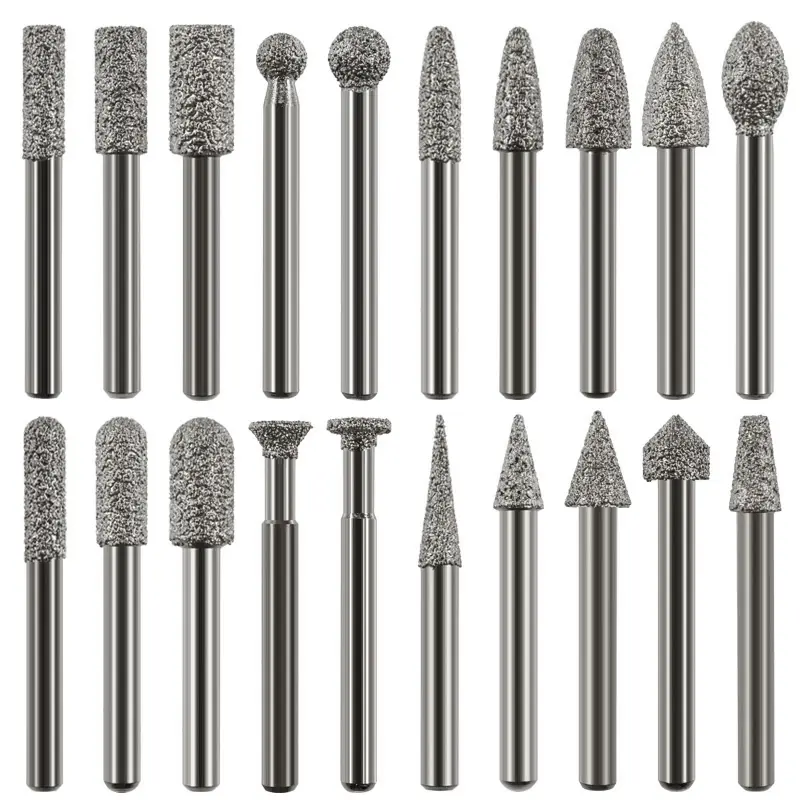Global Leading Diamond Tool Manufacturer.
How Diamond Tools Differ in Environmental Impact
Diamond tools have long been a cornerstone in industrial applications, known for their unmatched hardness and cutting efficiency. From construction to electronics, these tools play a critical role in shaping and refining materials. However, as industries become more conscious of their ecological footprints, the environmental impact of diamond tools has come under scrutiny. The ethical use of diamond tools means balancing their efficiency with sustainability. This topic is crucial for industries aiming to minimize their ecological impact while maintaining productivity.
Understanding Diamond Tools: Composition and Usage
Diamond tools are meticulously crafted by bonding synthetic or natural diamond particles to a base material, often made from metals, resins, or ceramics. This composition enhances cutting performance, making them indispensable in various industries. The versatility of diamond tools across sectors like construction, mining, and manufacturing highlights their importance. However, the composition also raises environmental concerns, primarily due to the extraction and processing of raw materials and the production of tool components.

Environmental Impact of Diamond Tool Manufacturing
The manufacturing process of diamond tools is a significant contributor to environmental degradation. Raw material extraction, such as cobalt and tungsten, often leads to habitat disruption and substantial energy consumption. Additionally, processes like sintering and electroplating generate waste and pollutants. These factors highlight the need for more sustainable manufacturing practices. For example, companies can adopt recycling processes and use renewable energy sources during production to reduce the overall ecological footprint.
Comparative Analysis: Diamond Tools vs. Traditional Tools
When compared to traditional tools made from materials like steel or carbide, diamond tools offer distinct environmental advantages and disadvantages. On the positive side, they tend to have a longer lifespan and higher efficiency, reducing the frequency of replacements and minimizing waste. However, the environmental cost of producing these tools, particularly in terms of energy use and raw material extraction, can offset these benefits. A balanced assessment is necessary to understand the true environmental impact.
Real-World Environmental Impact Assessments
Several industries have undertaken detailed environmental impact assessments to better understand the role of diamond tools. In the construction sector, for example, diamond tools have been shown to reduce energy consumption and material waste. However, the high environmental costs of manufacturing these tools remain a challenge. Companies have responded by implementing recycling processes and using renewable energy during production. For instance, a construction firm in Australia has successfully reduced its carbon footprint by 30% through the use of sustainable diamond tools.
Innovative Approaches to Reducing Environmental Impact
Innovation is paving the way for more sustainable diamond tool production. Advances in technology have led to the development of tools with enhanced recyclability and reduced material use. Researchers are also exploring eco-friendly bonding agents and synthetic diamonds produced with lower carbon footprints. For example, a cutting-edge research project in the UK focuses on developing synthetic diamonds with a smaller environmental footprint. These innovations hold the potential to significantly reduce the environmental impact of diamond tools.
The Future of Diamond Tools in a Sustainable World
As the demand for sustainable practices grows, the future of diamond tools looks promising. Continued innovation and stricter environmental regulations are expected to drive the development of greener production methods. The integration of circular economy principles, where tools are designed for reuse and recycling, could further minimize their ecological impact. For instance, a company in the mining industry is collaborating with universities to create a circular supply chain for diamond tools, ensuring that waste is minimized and resources are efficiently reused.

